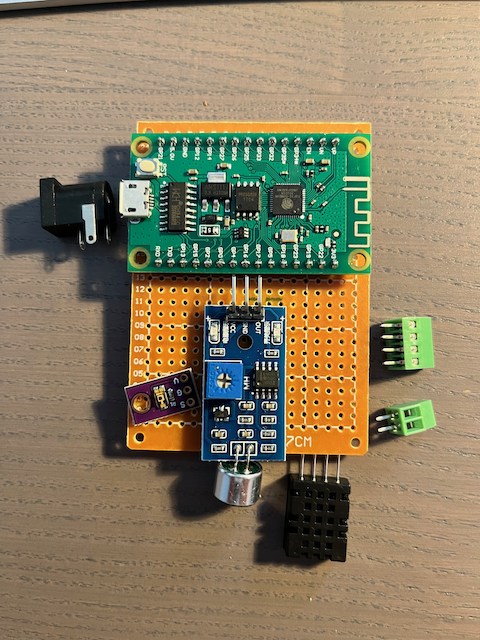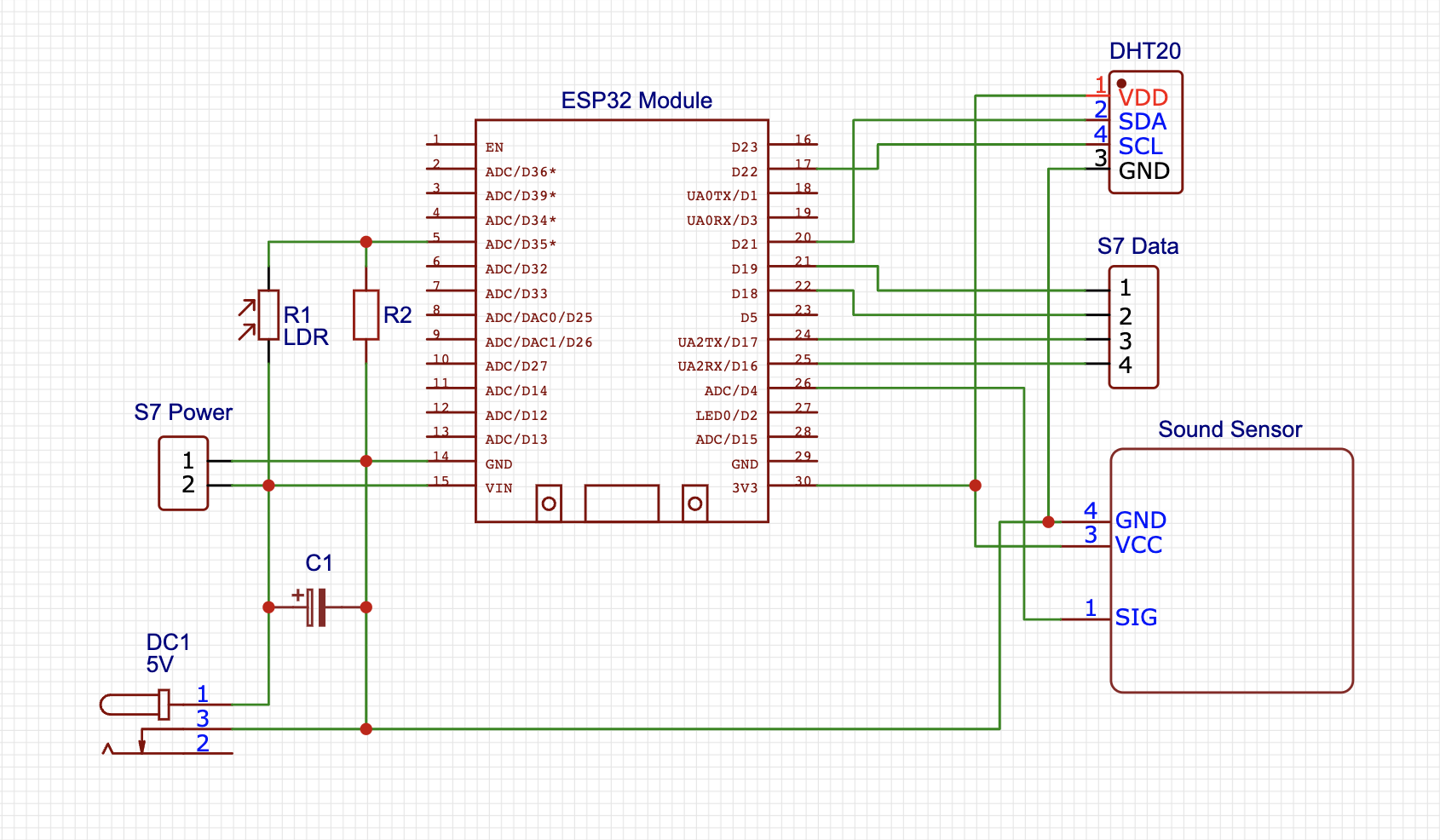2 minutes
Sizable7 Demo Clock Project I

I wanted to create a demo project for Sizable7 to show how easy it would be to create something nice with the Sizable7 modules. It had to be done using generic off the shelf components everyone can source. Normally I would design a PCB but this time I choose to just take some perfboard and ready made module boards. So anyone would be able to recreate this project for fairly low costs. This is the pile I started out with. Later on I swapped out the light sensor module for a regular LDR as that was working better for ambient light sensing.
I came up with the following circuit diagram. The clock is powered by a 5V/3A/15W wall adapter. That should be sufficient for 4 modules (I use 750mA as a maximum per module). I added a 1000 µF capacitor to deal with possible power fluctuations. Then the 5V goes to a screw terminal for connecting the S7 modules power (later on I show how I did the power distribution). The ESP32 module is also powered by the 5V (using its on-board regulator the 5V will be stepped down to 3.3V).

I added a simple LDR resistor devider circuit to sense the ambient light conditions. One of the ESP32 ADC’s is used to sample the voltage and translates the values to brightness ranges. The idea here is to vary the Sizable7 brightness in line with the ambient light conditions. This is done so the clock will not be super bright at night but bright enough with daylight conditions.
The DHT20 temperature/humidity sensor is simply connected using I2C and the sound module is connected to a digital input which will be used as a trigger when sound is detected. So this sound module is not used to measure sound levels but purely to detect if sounds are above a threshold. For a simple application like this nothing more is needed.
Then the Data screw terminal is connected to four separate GPIO’s but in the end I just used one to drive the four digits in a chain (I was not sure yet which route I would go with the Data lines). When using a library like FastLED you can have all LED’s (of all modules) in one chain or you could have 4 separate objects with their own individual Data.
Please see part II for more…
